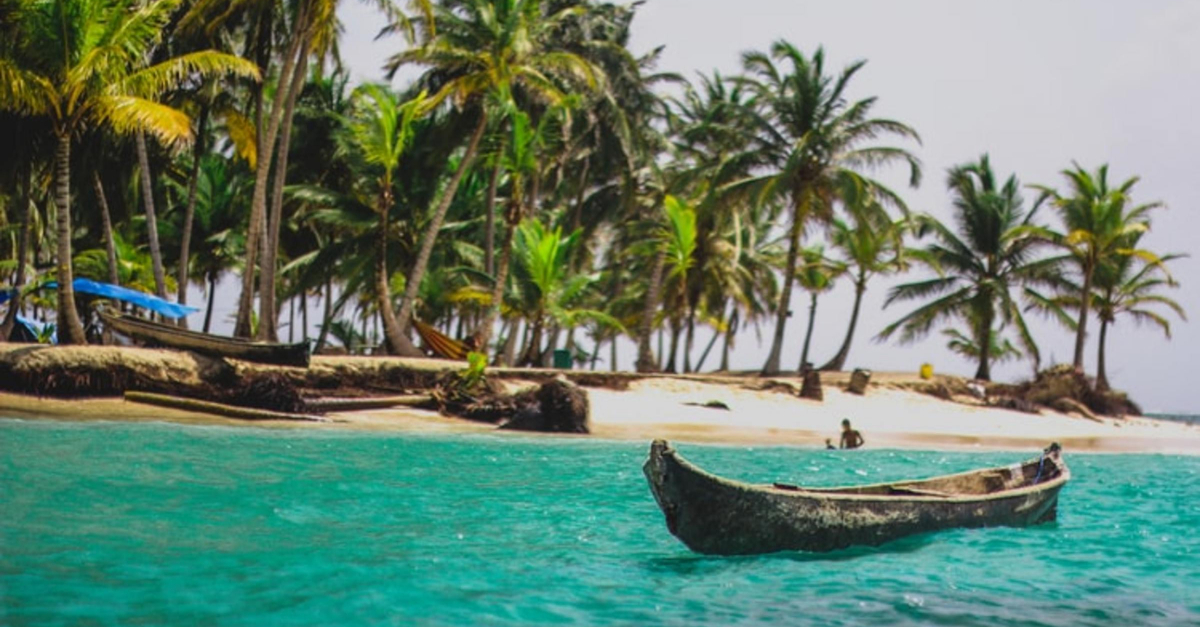The title of this article may be a little misleading because I will not talk about the tangible steps you need to take in order to move to this lovely country. I will write about the ins-and-outs of living in Panamá in a later post. Today, I want to help you think about whether making Panamá your new home is the right decision for you.
I grew up in Germany, a country where seasons are celebrated. Personally, I didn’t appreciate them all that much. I always dreamed about living in tropical weather, with lots of palm trees, and a climate with perpetual sunshine. And that Panamá has. If you love seasons and winters, Panamá doesn’t have it.
Winter Means Rain
Sure, we have summer and winter, but the only difference between the two is it rains a lot in the winter, and not so much in the summer.

The temperature in Panamá City is constant all year: daytime between 85-89 degrees Fahrenheit (that’s 29-32 degrees Celsius) and at night is 71-80 degrees Fahrenheit (22-27 degrees Celsius).
There is no other variation, at least not in Panamá City. In the mountains, temperatures may be around 72F during the day and it can get nippy at night, a much less tropical feel.
The winter season starts when the first rain arrives seemingly out of nowhere, sometime in late March and lasts often until December. But the rainy season in Panamá doesn’t mean endless rain for days or weeks on end either. It’s perhaps 3 hours of rain a day with heavy thunderstorms riding through the ozone-charged air.
People often wait at mall entrances and underpasses for a rainstorm to pass before moving on. When it rains here, it’s coming down in buckets–the tropical way. The rest is of the day is baked in sunshine. Naturally, the humidity is Florida-high in the winter. Just now, in January, it’s much dryer air.
Lots of Sunshine
Many people in Panamá walk around with an umbrella, even during summer. They aren’t preparing for an unsuspected shower, it’s to protect themselves from a merciless sun.

As for me, I love it, the heat, all of it, and I got my Panamá hat, which does the trick for me.
Panamá hats aren’t a Panamanian original though. Their design comes from the people of Ecuador, and making Panamá hats is an Ecuadorian tradition. I bought three when I came here. I just love my hats!
Back to Panamá. If you are not doing well in hot weather, Panama City may not be the right choice for you, and perhaps the mountains of Boquete are more comfortable for you.
When I first evaluated my options for South and Central American countries to hang my hat, I considered a few criteria that were deal breakers for me.
Yours may differ, though. I compared Panamá with Belize, Mexico, and Argentina. They were:
- Immigration requirements
This depends on the country of your origin. If you are from a friendly nation, it’s easy sailing and least costly. If you’re not, then significant funds may be required to obtain a residency visa and a cedula (national ID card). - The political situation and crime statistics
Panama has a rich history. Its parliamentary system has its problems, but it’s a stable and peaceful country. I haven’t witnessed any crimes, but they exist. However, it’s much lower than in many other Central or South American countries. - Cost of living
On the low-end, a single person can live comfortably on $2300 a month. Upward, like everywhere else, the blue sky is the limit. - Maturity of internet infrastructure
This was a biggy for me. I am working remotely, offering international clients my writing services. I also used to have an internet radio show with a live video feed. Luckily, there are plenty of affordable internet providers around. I have settled for Fibre 500 MB up/down for less than $60 a month. The options thin out though the further away from Panamá City you decide to settle. - Currency value and ease of transfer of funds
Easy does it. Although the official Panamanian currency is the Panamá Balboa, everyone trades in US Dollars, which is pegged 1:1 to the USD. All ATMs spit out Jacksons. However, I strongly suggest retaining your home country bank account, as services such as Paypal do not allow the transfer of funds to a Panamanian bank account. It is also incredibly bureaucratic to obtain a bank account in Panamá. The documentation requirements seem to change as often as German seasons in a year. - Right to bear arms
If you’re a permanent resident in Panamá, you can obtain a firearm license, valid for five years. Firearms may not be imported, and as a result, their prices here are insanely high. I do use a shooting range not far from here to keep my skills on target. However, the new administration has signaled that they may make changes to existing laws, and it may not be all that favorable for the average gun owner. Watch this space.
I hope this blog post inspires you to think about your priorities when considering a move to Panamá. I have much more to tell you about Panamá and will go into details on the things I have touched on in future posts.
Thinking of moving to Panamá? If you have questions, please leave a comment and I will address them in one of my next posts.
By: LP Wirth


